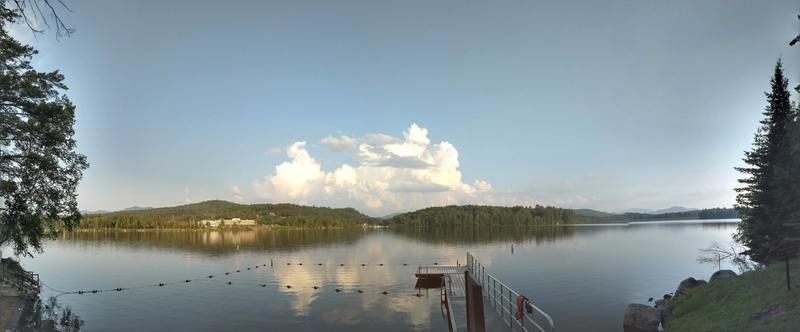What I want to do
I'm trying to get a simple setup with the Riffle to measure electrical conductivity, and at this point I want to buy a commercial EC probe that is compatible with it.
My attempt and results
I know that the Riffle supports the i2c and one-wire protocols, but I also know that it has limited memory and other hardware specs.
I tried searching online, but I'm not knowledgeable enough to find what I'm looking for. "I2c Electrical Conductivity probe" only returned one real lead: this probe and sensor board, which I may end up buying. https://www.atlas-scientific.com/product_pages/circuits/ezo_ec.html
Questions and next steps
Will what I'm buying be compatible for the Riffle? How can I better search for compatible sensors that are supposedly relatively easy to find?
Next step questions for later: * Waterproofing the apparatus * Writing the code * Adding a WiFi or other component to wirelessly retrieve data?
Why I'm interested
I am working at an Environmental conservation camp this summer and would love to show kids what citizen science looks like. Road salt infiltration is a big issue in this area, and Paul Smith's college professors already do a lot about measuring conductivity in streams upstream and downstream of roadway runoff, and correlating that to household water quality, for instance.

I was impressed by the price ($12.90) of the DFRobot TDS sensor that MadTinker is working with so I bought a couple. It was easy to get it to work with a DS18B20 temperature sensor for temperature compensation. There is plenty of memory in a 328p Arduino (Mini Pearl or Riffle) to run both. I have not yet deployed it so I can't confirm that it will do what I want, but my requirements are low. I just want to track changes in sediment load in stream or spring water. Preliminary tests suggest it might work well for this.
The TDS meter measures electrical conductivity and uses that to derive total dissolved solids. I don't care what the actual units are, and I would not have much confidence in them anyway for long-term monitoring (electrode corrosion, fouling, etc). I just want a measure of conductivity that will tell me something about relative sediment load or dissolved solids. For example, is there a change after it rains?
Adding a radio to this data logger might be asking a lot of a 328p. A Mini Pearl Logger (Arduino Pro Mini, SD card, and RTC) with the DFRobot TDS meter and a DS18B20 requires a sketch that uses about 60% of the available memory. When 75% of memory is used it becomes unreliable. So without skillful programming there might not be enough memory in a 328p to add wireless data transmission to this system. It might work without the RTC and SD card (the sketch can be smaller), and these are not necessary if the data are being sent somewhere that knows the time and can save the data.
Because of this memory limitation, I started this project with a pair of Adafruit Feathers with LoRa radios. Feathers have plenty of memory (but cost ~3x more than the Mini Pearl solution). I got the radios to work, and I could send packets from my springhouse to my office. But when I added the DFRobot TDS sensor, the DS18B20, and FeatherWings for data logging (SD card and RTC) the Arduino Gods got angry and frowned upon me and my domain. I assume there were some pins being illegitimately shared by the FeatherWing and something else but I couldn't figure it out.
So I abandoned the radio idea and went back to the 328p (Mini Pearl) just logging data. The Arduino Gods continued to frown for a while, but I noticed some appeasement recently so maybe I can get this thing deployed someday.
I bought some $7.00 bare-bones LoRa radio modules which could be added to the Mini Pearl Loggers. I assume it will require repeated fiery sacrifices and much fervent chanting to get these working.
Chris
Is this a question? Click here to post it to the Questions page.
Reply to this comment...
Log in to comment
This attempt to get people compiling a list might be helpful... esp if we can figure out a place to feature this --
https://publiclab.org/notes/warren/12-06-2017/help-collect-environmental-sensors-probes-on-a-shared-list
Reply to this comment...
Log in to comment
Oh and also this one! https://publiclab.org/notes/warren/12-06-2017/help-document-how-to-connect-different-sensors-to-a-data-logger
Reply to this comment...
Log in to comment
Chris, thanks so much for your input. That information about memory usage is invaluable. I will plan on the non-wireless route for now. Maybe with a Mayfly, I would have enough memory to integrate a wireless solution.
Thanks for the information on the TDS sensor! Some of the DF Robots stuff came up in my search! But I couldn't exactly figure out how to buy just the sensor and not the whole Know Flow. So thank you, and thanks for your insights about the TDS units vs. Conductivity measurement. If what we're doing is just detecting events (which is consistent with how the EPA has allowed conductivity measurements to be used) that's all I would really need.
Jeff, thank you SO MUCH for that list! I was hoping to find something like that. I did a cursory search of Public Lab, and read some wiki pages, but I did not turn up anything like that. I will let you all know what happens with this experiment!
Reply to this comment...
Log in to comment